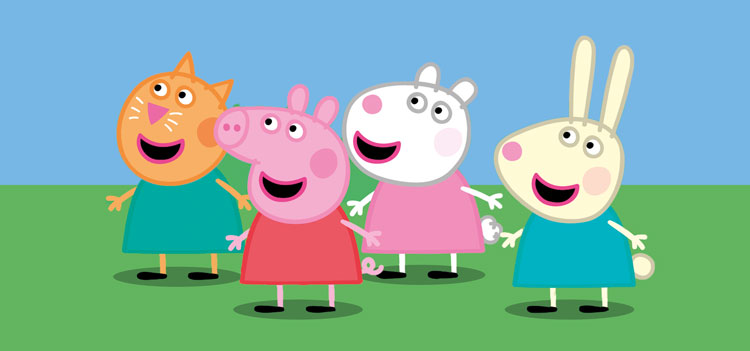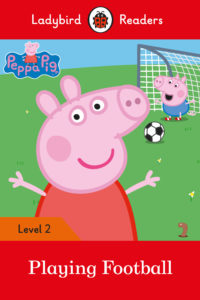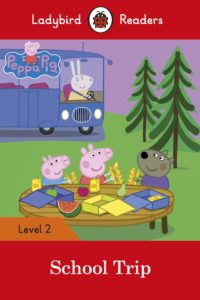Focus on friendship with Peppa Pig

Peppa Pig Ladybird Readers have lovable characters which engage second language learners. Peppa Pig is always with her friends and the theme of friendship runs through each of these books.

This is a great book in the series to focus on the importance of friendship and working as part of a team. The book shows all of Peppa’s friends playing together. Focusing on the positive aspects of friendship can help learners build groups of friends and create a solid foundation in their school life.
The activities below will focus on the theme of friendship and how this can be explored in the classroom.
Movement
Movement and active learning can really help bring a book to life especially for the more reluctant readers. This book focuses on a football game and there are different actions that can be used whilst reading. Movement together as a class is a fun way to involve all learners.
Teach the key actions through mime:
1) kick
2) throw
3) run
4) goal
Whilst reading encourage all the pupils to mime the action each time it appears in the book. Remind students these should be mimes so you don’t end up with a stampede in the classroom! The goal is a big smile with two arms waving in the air.
 Post reading activities are just as important as the actually reading process itself. This gives teachers the opportunity to concept check key vocabulary items, consolidation of a theme or topic and to see how much the pupils have understood from the overall book.
Post reading activities are just as important as the actually reading process itself. This gives teachers the opportunity to concept check key vocabulary items, consolidation of a theme or topic and to see how much the pupils have understood from the overall book.
1) Make a table in your classroom with a range of realia from the story. Use the realia to re tell the story and as a tool to elicit ideas and sentences from the pupils. Pupils need to select an item from the table and make a sentence or reference to how it was used in the book.
Table Book Display (visuals of each item below)
A picnic basket
A toy bus
A mountain
Grass
Snow
Ducks
Examples:
A picnic basket – Peppa and her friends had a picnic.
Ducks – Peppa and her friends saw some ducks.
2) Picture Card Movement Game
Have a range of coloured pictures placed around the classroom or in the playground as an outdoor activity. The pictures are all key vocabulary items from the book. Spread these around a classroom:
A picnic
A bus
Children
Snow
Mountain
Arrow going up
Arrow going down
Ducks
Give the pupils instructions as a class, everyone walk very slowly to the ducks, the pupils need to listen to the sentences, understand it and make their way to the correct picture. Once all the pupils are by the picture, elicit as much information as possible. This is an effective method to consolidate key words in a fun and engaging way.
Examples of different instructions:
Hop to the mountain.
Jump to the snow.
Walk quickly to the bus.
3) Giant Floor Match Up
Make A3 coloured pictures of key language from the book and then make word cards for each picture. Lay all the cards down flat and the class have to work together with the teacher to match each picture and word correctly. Give each pupil the opportunity to turn over a card, this is a whole class activity with the pupils standing and actively taking part.
Examples:
Picture of a duck – Word card with duck written on it
Picture of a mountain – Word card with mountain written on it
4) The Picnic and Friends
Use the theme of a picnic in the book to focus on a class picnic with classmates. This can focus on the theme of friendship. Set up a picnic arrangement in the class for all the pupils. Possible questions / teacher led activities for the friendship picnic:
- Ask students who they want to sit with on the friendship picnic. Ask learners to make a seating plan so everyone can sit next to their friends.
- Ask learners to think of all words related to friendship – an effective way to do this is to pass a ball around all the pupils and when they have the ball they have to give a word related to friendship.
- Write a selection of words on the board, learners work in pairs or small groups and choose all the words related to friendship.
- Concept check all words with the class to make sure weaker learners are following.
